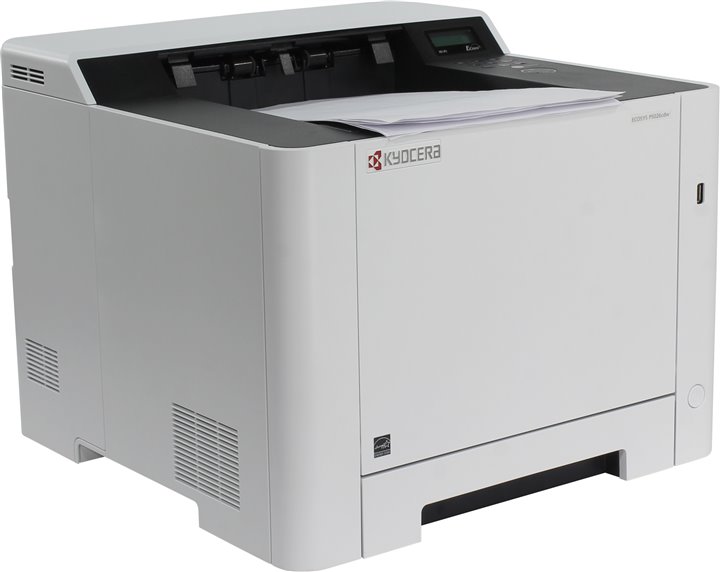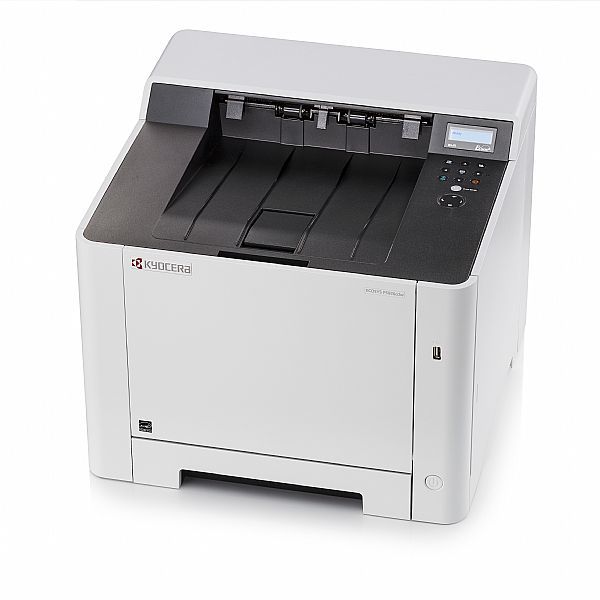 Original Equipment Manufacturers (OEM), these days, are very prolific with the number of printing devices on their portfolios. They do this because they know their customers. People have become very specific and knowledgeable about what they want from their products. So, the OEMs are adapting. Kyocera is one of those OEMs that have adapted well. They have models that are similar in various ways but different in a few. In fact, for every printer type, they release dual models – a single-function device and a multifunction device.
Original Equipment Manufacturers (OEM), these days, are very prolific with the number of printing devices on their portfolios. They do this because they know their customers. People have become very specific and knowledgeable about what they want from their products. So, the OEMs are adapting. Kyocera is one of those OEMs that have adapted well. They have models that are similar in various ways but different in a few. In fact, for every printer type, they release dual models – a single-function device and a multifunction device.
In the middle of March, we reviewed the multifunction device Kyocera ECOSYS M5526cdw. Today, we’re reviewing that device’s printer counterpart – the Kyocera ECOSYS P5026cdw. Both of these are no-frills devices that are aimed at small to medium-sized businesses. Further, both of them aren’t intended for heavy-duty printing needs. Even though they offer scalability in terms of paper handling, the scaled-up capacities barely reach the medium-duty range.
Still, if what you want is a steady and capable single-function colour laser printer, the Kyocera ECOSYS P5026cdw has the ability to serve you very well. Here’s our review.
Strengths of Kyocera ECOSYS P5026cdw
 We called the Kyocera ECOSYS P5026cdw steady and capable. Those adjectives took the print output quality of this into consideration. The print output quality of the P5026cdw is very impressive provided you’re printing documents that are meant to be printed. This means text and graphics intended for business use.
We called the Kyocera ECOSYS P5026cdw steady and capable. Those adjectives took the print output quality of this into consideration. The print output quality of the P5026cdw is very impressive provided you’re printing documents that are meant to be printed. This means text and graphics intended for business use.
It doesn’t mean photos because the ECOSYS P5026cdw isn’t meant for printing photos. If you print text or graphics, you’ll get the benefit of up to 9600 x 600 dots per inch (dpi) maximum resolution.
This should be good enough for most business applications. The Kyocera ECOSYS P5026cdw isn’t meant for heavy-duty printing. However, for most small to medium scale businesses, its total paper capacity of 300 sheets should be enough. This standard paper capacity includes a 250-sheet main paper tray and a 50-sheet multipurpose tray.
If you print a little more, though, you can increase your device’s paper handling capacity by opting for an additional 250-sheet paper tray. This will take the total capacity to 550 sheets but will cost you around $200.
The connectivity options available with the Kyocera ECOSYS P5026cdw definitely add to its allure as well. There are three ways through which you can connect to this device. The first is the usual Ethernet port, the second is the USB 2.0 port, and the third is wireless.
Ethernet and wireless connectivity options will open up mobile compatibility which means support for the Kyocera Mobile Print app and third party service providers such as One Drive, Evernote, and DropBox. Functionality wise, if you’re one of those walk-in-and-print types, then the front-facing USB port will give you heart.
It should also be mentioned that automatic duplexing is a standard feature on the P5026cdw. Automatic duplexing will allow you to print on both sides of a sheet and, in the process, halve your paper costs.
Weaknesses of Kyocera ECOSYS P5026cdw
 For a device that is intended for the low-volume printing community, the Kyocera ECOSYS P5026cdw is a bit pricey.
For a device that is intended for the low-volume printing community, the Kyocera ECOSYS P5026cdw is a bit pricey.
It isn’t the most expensive but it isn’t the most affordable either but it does fall on the expensive side of the spectrum. As it is, the device’s listed price is $589 but it can be had for a much lower price tag.
Shopping around is recommended if you’re interested in this machine. You can probably get it for just above $400.
The fact that the Kyocera ECOSYS P5026cdw isn’t meant for heavy-duty printing favours it when it comes to running costs. The per-page costs of the P5026cdw are high but they shouldn’t matter if you’re not going to print in bulk. They do vary, though, on the basis of who manufactures your cartridges.
If you insist on using only OEM or genuine cartridges, then you should buckle down to pay about 21.46 cents for every printed sheet. However, if you’re open to aftermarket options such as compatible or generic cartridges, then you can benefit from the per-page cost of only 17.46 cents. Needless to say, savings worth four cents on every page you print can add up over time.
A bigger problem than the acquisition cost or running cost is the LCD display screen on this device. The problem is simply that it is too small. In fact, it is probably the most simplistic display screen you’ll find in this market segment. In addition to its small size, the display screen is also plagued by an antiquated user interface.
Finally, if you’re planning to print photos, you should pass on the Kyocera ECOSYS P5026cdw. The OEM specifies that the device doesn’t support photo paper and this is something you should heed. However, if you buy the device and later have a passing need for printing photos, you can use the “coated paper” setting to do it. The results won’t be stellar with the photos being dull and dim but in an emergency, they’ll work.
Key Features of Kyocera ECOSYS P5026cdw
 When it comes to the weight of a business printer, we tend to not obsess with it. The reason being that the only way such devices can be made lightweight is by using a less dense housing. This will make the construction material weak which will affect the printer’s durability. By the same logic, if a device is heavy, then you know that the housing is made of sterner stuff.
When it comes to the weight of a business printer, we tend to not obsess with it. The reason being that the only way such devices can be made lightweight is by using a less dense housing. This will make the construction material weak which will affect the printer’s durability. By the same logic, if a device is heavy, then you know that the housing is made of sterner stuff.
The Kyocera ECOSYS P5026cdw is large and heavy both. It weighs about 21 Kg, so you should get help when the time comes to install it. You should also find a dedicated niche for this device. It doesn’t have to be out of the way because the ECOSYS P5026cdw isn’t clunky to look at. It’s rounded and curvy off-white outer body should suit most decors. In case you’re wondering, this device measures 410mm in width and depth and 329mm in height.
We didn’t mention the print speed of this printer in any of the sections above because we don’t view it as a weakness or strength. The Kyocera ECOSYS P5026cdw prints at a decent clip of 26 pages per minute (ppm). You’ll probably not find many competing devices with better print speeds but that doesn’t take away the fact that this speed pales in front of higher end devices.
Behind the housing, you’ll find an 800 MHz processor backed up by a 512MB RAM. The former is never upgraded while the OEM hasn’t provided the option to upgrade the latter. These two combine with the print engine to deliver a first-print-out time of about 9.5 seconds.
The device comes with a 24-month onsite warranty. Alternatively, 100,000 pages is also a warranty condition mainly because that is the life of the ceramic drum used in this device.

